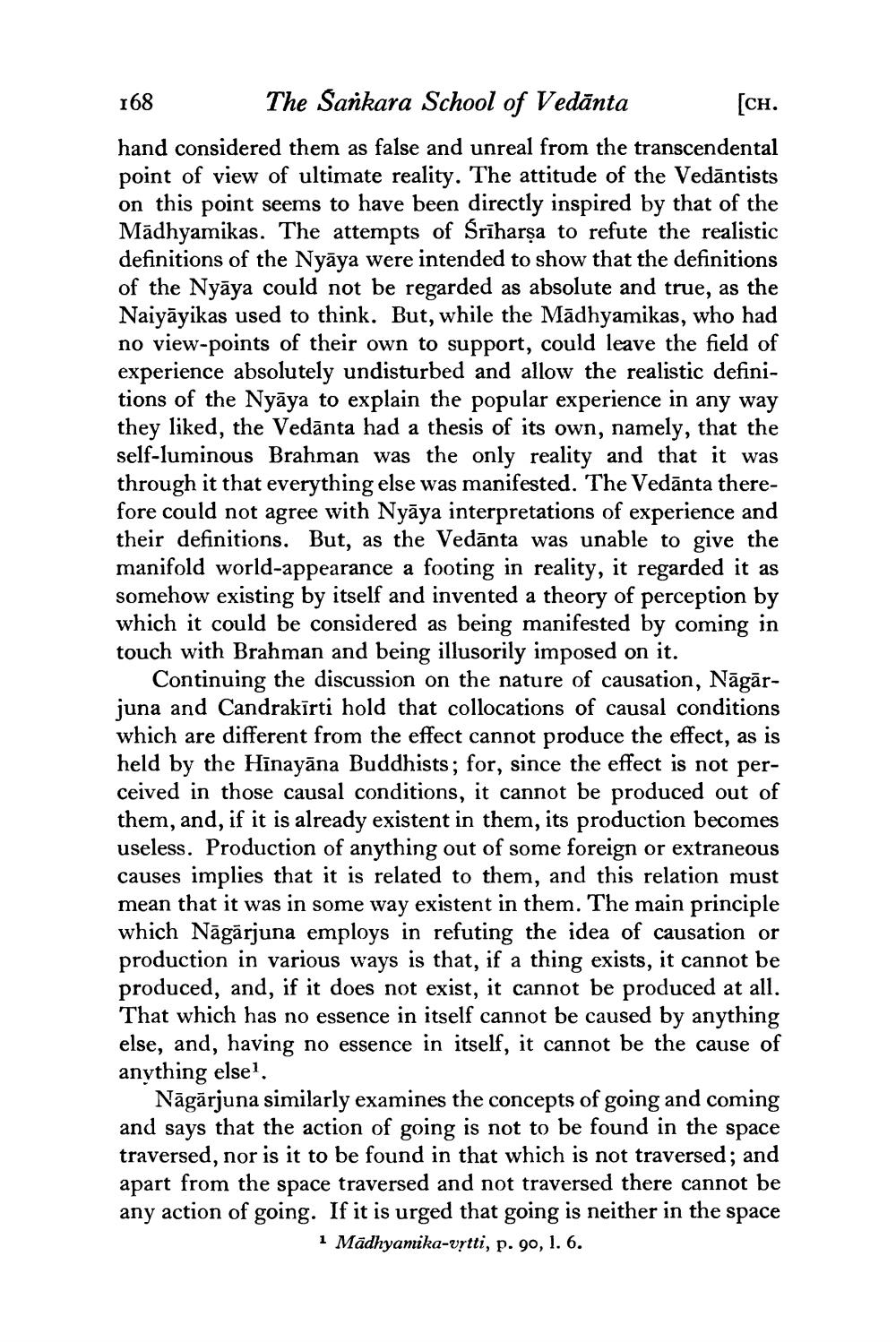________________
168
The Sankara School of Vedanta
hand considered them as false and unreal from the transcendental point of view of ultimate reality. The attitude of the Vedantists on this point seems to have been directly inspired by that of the Madhyamikas. The attempts of Sriharṣa to refute the realistic definitions of the Nyāya were intended to show that the definitions of the Nyaya could not be regarded as absolute and true, as the Naiyayikas used to think. But, while the Madhyamikas, who had no view-points of their own to support, could leave the field of experience absolutely undisturbed and allow the realistic definitions of the Nyaya to explain the popular experience in any way they liked, the Vedanta had a thesis of its own, namely, that the self-luminous Brahman was the only reality and that it was through it that everything else was manifested. The Vedanta therefore could not agree with Nyaya interpretations of experience and their definitions. But, as the Vedanta was unable to give the manifold world-appearance a footing in reality, it regarded it as somehow existing by itself and invented a theory of perception by which it could be considered as being manifested by coming in touch with Brahman and being illusorily imposed on it.
Continuing the discussion on the nature of causation, Nāgārjuna and Candrakīrti hold that collocations of causal conditions which are different from the effect cannot produce the effect, as is held by the Hinayana Buddhists; for, since the effect is not perceived in those causal conditions, it cannot be produced out of them, and, if it is already existent in them, its production becomes useless. Production of anything out of some foreign or extraneous causes implies that it is related to them, and this relation must mean that it was in some way existent in them. The main principle which Nagarjuna employs in refuting the idea of causation or production in various ways is that, if a thing exists, it cannot be produced, and, if it does not exist, it cannot be produced at all. That which has no essence in itself cannot be caused by anything else, and, having no essence in itself, it cannot be the cause of anything else1.
[CH.
Nagarjuna similarly examines the concepts of going and coming and says that the action of going is not to be found in the space traversed, nor is it to be found in that which is not traversed; and apart from the space traversed and not traversed there cannot be any action of going. If it is urged that going is neither in the space 1 Madhyamika-vṛtti, p. 90, 1. 6.




